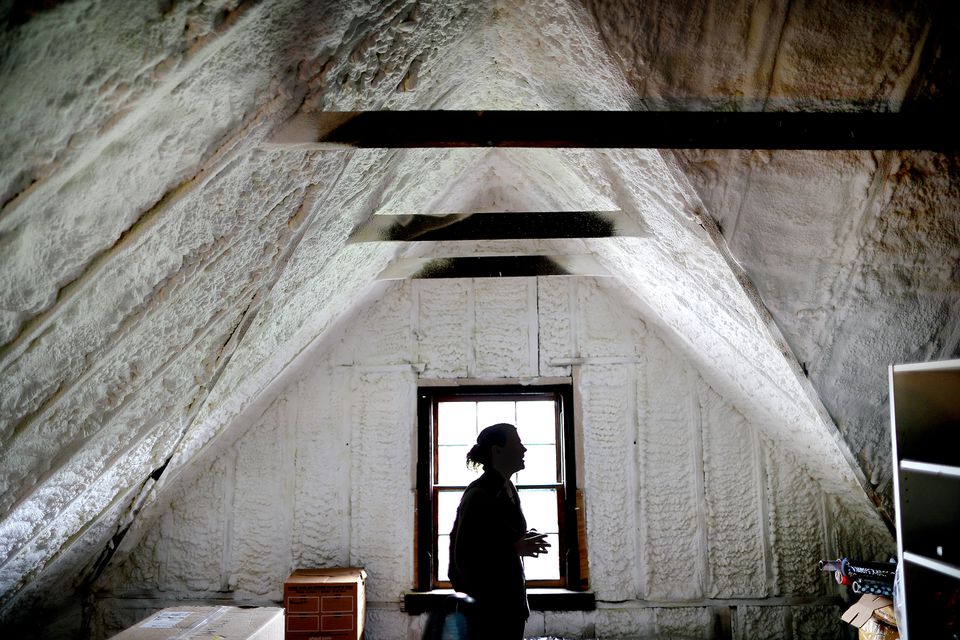The Best Way To Clean Up Your Home Energy Act May Be Beneath You – The Hudson Indy Westchester’s Rivertowns News – – The Hudson Independent
Energy Disrupter
August 24, 2021
By Sue Treiman–
For years, we’ve looked up to the sun to help save energy costs. Now, several Westchester organizations are suggesting a change in perspective. Buried deep beneath our feet, they say, is an equally powerful, infinitely renewable, and clean energy source: Geothermal.
Advertisement
Sustainable Westchester will take that message to Irvington, Sleepy Hollow, and Tarrytown with a special event on September 22nd along with numerous related activities, all of them designed to wean the country off carbon-creating fossil fuels. The outreach project, dubbed “EnergySmart HOMES-Rivertowns,” encourages homeowners to replace gas and oil-fueled conventional heating and cooling systems with ground source heat pumps (GSHP)-geothermal systems fueled by the constant temperatures below the ground as well as air-source heat pumps and energy-saving retrofits.
To help make the point, Sustainable Westchester’s funding organization, New York State Energy Research and Development Agency (NYSERDA) recently unveiled an online tool that enables property owners to explore whether geothermal would make sense for their home, apartment or commercial or business building. The website consolidates information on 280,140 individual sites and buildings in “gas constrained” southern Westchester, where the spigot for new natural gas installations was cut off two years ago because the area’s pipelines were nearing full capacity.
The online tool is available at https://geopossibilities.ny.gov/ . It was introduced during what was the hottest July on record as a way to allow thousands of property owners to check out whether the alternative GSHP system makes sense for them. The site also offers rough estimates of the cost of conservation before the many subsidies, rebates and tax incentives kick in.
“Anyone planning for a new installation, new construction, or a major renovation should at least consider geothermal energy and check whether it’s feasible on their property,” suggests Charles Copeland, CEO of Goldman Copeland Consulting Engineers and a prominent expert on sustainable building infrastructure.
GSHP uses the constant 55-degree temperature below the earth’s surface to regulate internal building temperature. The US Environmental Protection Agency describes it as the most “energy-efficient, environmentally clean, and cost-effective heating and cooling system.”
Copeland, who lives in Hastings-on-Hudson, notes that the combination of aging homes, solid rocky ground and committed pubic advocates make the Rivertowns ideal for geothermal conversions. But he cautions the energy-curious to “do your homework before you take this on.”
Geothermal pumps use the consistent underground temperature, captured through piping buried underground, to regulate home heat and air conditioning. The system removes hot air during the summer, bringing indoor temperatures down, and distributes and further heats the warmer underground air in winter to achieve year-round comfort. It does that while eliminating the risk of deadly fumes, including carbon dioxide, and leaks that can accompany fossil fuel HVAC systems, as well as the possibility for fire or explosion. In addition, geothermal can safeguard property owners against the unpredictable cost and availability of fossil fuels.
Until recently, switching to ground source heating and cooling cost between $15,000 and an estimated $40,000 before rebates and tax breaks, depending on the size and location of the lots. Installation requires a property owner to excavate an outdoor area roughly the size of a car parking space, dig a trench to accommodate loops of fluid-filled piping, and connect the pipes to an indoor heat pump. Geothermal advocates claim the in-ground piping itself has a lifespan of more than half a century, while heat pumps can last more than 20 years, comparable to ordinary furnaces and boilers. Switching to geothermal makes the most sense for those expecting to replace their current system anyway, or for those anticipating major renovations or new construction. In addition, with tens of thousands of new housing units already planned for Westchester, advocates say the time to go underground is now.
“The state has said it wants to eventually see 400 home conversions every day across the state,” says Lauren Brois, Program Director for Sustainable Westchester’s EnergySmart HOMES program (previously called HeatSmart).
The September EnergySmart HOMES outreach targets the three towns – Irvington, Sleepy Hollow, and Tarrytown, after having already added Dobbs Ferry, Hastings-on-Hudson and other municipalities to the mix under the EnergySmart HOMES predecessor program.
Funded by NYSERDA, EnergySmart HOMES also advises would-be geothermal converts, matching them with qualified contractors and other service providers and walking them through the sometimes-complicated journey to geothermal conversion.
“It can be a lot to navigate,” says Brois, “So, we help people schedule a free home energy audit to get started and then, if they go ahead, we can determine which system is right for them, best contractors and the right spots to cut the cost through access to incentives, tax breaks, rebates, and other available offsets.”
A total system carries a high initial price tag, even $40,000 or more, but can be trimmed to roughly $8,000 by taking full advantage of all the funding options for systems that currently represent the largest energy expense in the average home. Heating alone is responsible for an estimated 37 percent of energy consumption and 32 percent of greenhouse gas emissions nationwide. Geothermal boosters say their system not only pays for itself eventually but can continue to use the free and abundant resource of underground temperature indefinitely.
Hastings-on-Hudson homeowners Haven Colgate and Don Wershba explored GSHP as a possible home heating and cooling option two years ago, as their furnace clearly reached the end of its life. Already determined to wean themselves from fossil fuels, they worked with Sustainable Westchester to line up Dandelion, a Google company that was just beginning its operations in the Hudson Valley.
“Dandelion helped us get credits to bring our $40,000 quote way down, even below what we would have spent to install a new furnace,” says Haven.
Also, because their home sits on a flat and spacious lot, there was adequate space for construction equipment to dig a trench, place the pipes, and connect them to the new indoor electrical pump. The process was quick and painless—but it was not totally perfect.
“We found that the electrical costs of using the geothermal system, especially for heating, were equal to what we paid earlier for our fossil fuel system, so it’s a fallacy to say all of your utility costs will come down,” warns Don Wershba.
He also worries, that the metal housing holding the indoor heating and cooling elements are too flimsy to last the predicted 20 years. But materials and excavation techniques are improving every year, making the outlook brighter for new converts. Says Haven, “We’re really happy with this system, and we strongly believe that switching to geothermal was the right thing to do.”
Adds energy consultant Copeland, “It’s important for our grandchildren and our future.”
Full details about EnergySmart HOMES are available on the Sustainable Westchester website, at https://sustainablewestchester.org/energysmarthomes or at 914-242-4725, ext 122.
Share the News!
Original Source: https://thehudsonindependent.com/the-best-way-to-clean-up-your-home-energy-act-may-be-beneath-you/





























